Established in 2011, the Chancellor’s Entrepreneurial Achievement Award recognizes UW–Madison innovators and alumni who have contributed to economic growth and the social good, serving as entrepreneurial models for the UW community and inspiring the campus culture of entrepreneurship.
Read the full article at: https://news.wisc.edu/entrepreneur-award-winners-turn-ideas-into-impact-from-farming-to-fashion-to-fusion/Awards and Honors
UW–Madison scientists part of team awarded Breakthrough Prize in Physics
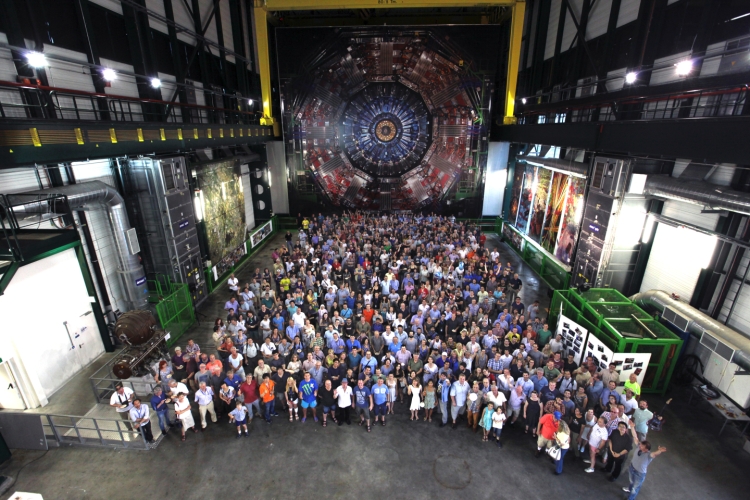
A team of 13,508 scientists, including over 100 from the University of Wisconsin–Madison, won the 2025 Breakthrough Prize in Fundamental Physics, the Breakthrough Prize Foundation announced April 5. The Prize recognized work conducted at CERN’s Large Hadron Collider (LHC) between 2015 and 2024.
The Breakthrough Prize was created to celebrate the wonders of our scientific age. The $3 million prize will be donated to the CERN & Society Foundation, which offers financial support to doctoral students to conduct research at CERN.
Four LHC projects were awarded, including ATLAS and CMS, both of which UW–Madison scientists work on. ATLAS and CMS jointly announced the discovery of the Higgs boson in 2012, and its discovery opened up many new avenues of research. In the years since, LHC researchers have worked towards a better understanding of this important particle because it interacts with all matter and gives other particles their mass. Both teams are actively engaged in analyzing LHC data in search of exciting and new physics.
“The LHC experiments have produced more than 3000 combined papers covering studies of electroweak physics and the Higgs boson, searches for dark matter, understanding quantum chromodynamics, and studying the symmetries of fundamental physics,” says CMS researcher Kevin Black, chair of the UW–Madison department of physics. “This work represents the combined contributions of many thousands of physicists, engineers, and computer scientists, and has taken decades to come to fruition. We are all very excited to be recognized with this award.”
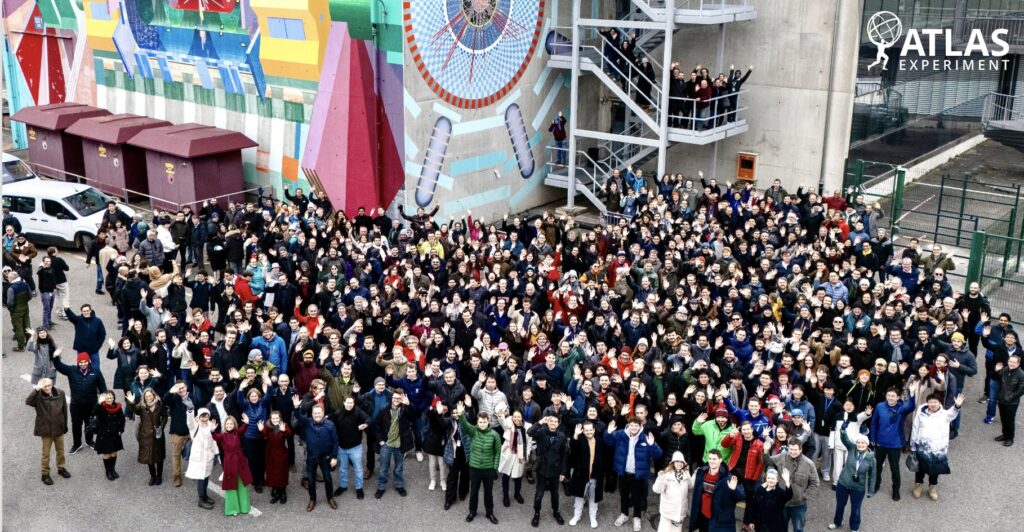
ATLAS and CMS have generally the same research goals, but different technical ways of addressing them. Both detectors probe the aftermath of particle collisions at the LHC and use the detectors’ high-precision measurements to address questions about the Standard Model of particle physics, the building blocks of matter and dark matter, exotic particles, extra dimensions, supersymmetry, and more.
The ATLAS team at UW–Madison has taken a leadership role in both physics analyses and computing. They have spearheaded precision measurements of the Higgs boson’s properties and conducted extensive searches for new physics, including Dark Matter, achieving major sensitivity gains through advanced AI and machine learning techniques. In addition to leading developments in computing infrastructure, the team has played a crucial role in the High-Level Trigger system and simulation efforts using generative AI, further enhancing the experiment’s capabilities.
The CMS team at UW–Madison has played and continues to play key roles in trigger electronics systems, which are ways of sorting through the tens of millions of megabytes of data produced each second by a collider experiment and retaining the most meaningful events. They also manage a large computing cluster at UW-Madison, contribute to the building and operating of muon detectors, make key contributions to CMS trigger and computing operations, and develop physics analysis techniques including AI/ML. The CMS group efforts are well recognized in the recently published compendium of results, dubbed, the Stairway to Heaven.
CMS and ATLAS research at UW–Madison is largely supported by the U.S. Department of Energy, with additional support from the National Science Foundation.
The following people had a UW–Madison affiliation during the time noted by the Prize:
Current Professors
Kevin Black, Tulika Bose, Kyle Cranmer, Sridhara Dasu, Matthew Herndon, Sau Lan Wu
Current PhD Physicists
Pieter Everaerts, Matthew Feickert, Camilla Galloni, Alexander Held, Wasikul Islam, Charis Koraka, Abdollah Mohammadi, Ajit Mohapatra, Laurent Pétré, Deborah Pinna, Jay Sandesara, Alexandre Savin, Varun Sharma, Werner Wiedenmann
Current Graduate Students
Anagha Aravind, Alkaid Cheng, He He, Abhishikth Mallampalli, Susmita Mondal, Ganesh Parida, Minh Tuan Pham, Dylan Teague, Abigail Warden
Current Engineering Staff
Shaojun Sun
Current Emeriti
Sunanda Banerjee (Senior Scientist), Richard Loveless (Distinguished Senior Scientist), Wesley H. Smith (Professor)
Alumni
Michalis Bachtis (Ph.D. 2012), Swagato Banerjee (Postdoc 2015), Austin Belknap (Ph.D. 2015), James Buchanan (Ph.D. 2019), Cecile Caillol (Postdoc), Duncan Carlsmith (Professor), Maria Cepeda (Postdoc), Jay Chan (Ph.D. 2023), Stephane Cooperstein (B.S. 2014), Isabelle De Bruyn (Scientist), Senka Djuric (Postdoc), Laura Dodd (Ph.D. 2018), Keegan Downham (B.S. 2020), Evan Friis (Postdoc), Bhawna Gomber (Postdoc), Lindsey Gray (Ph.D. 2012), Monika Grothe (Scientist), Wen Guan (Engineer with PhD 2022), Andrew Straiton Hard (Ph.D. 2018), Yang Heng (Ph.D. 2019), Usama Hussain (Ph.D. 2020), Haoshuang Ji (Ph.D. 2019), Xiangyang Ju (Ph.D. 2018), Laser Seymour Kaplan (Ph.D. 2019), Lashkar Kashif (Postdoc 2019), Pamela Klabbers (Scientist), Evan Koenig (BS 2018, Intern), Amanda Kaitlyn Kruse (Ph.D. 2015), Armando Lanaro (Senior Scientist), Jessica Leonard (Ph.D. 2011), Aaron Levine (Ph.D. 2016), Andrew Loeliger (Ph.D. 2022), Kenneth Long (Ph.D. 2019), Jithin Madhusudanan Sreekala (Ph.D. 2022) Yao Ming (Ph.D. 2018), Isobel Ojalvo (Ph.D. 2014, Postdoc), Lauren Melissa Osojnak (Ph.D. 2020), Tom Perry (Ph.D. 2016), Elois Petruska (BS, 2021), Yan Qian (Undergraduate Student 2023), Tyler Ruggles (Ph.D. 2018, Postdoc), Tapas Sarangi (Scientist), Victor Shang (Ph.D. 2024), Manuel Silva (Ph.D. 2019), Nick Smith (Ph.D. 2018), Amy Tee (Postdoc, 2023), Stephen Trembath-Reichert (M.S. 2020), Ho-Fung Tsoi (Ph.D. 2024), Devin Taylor (Ph.D. 2017), Wren Vetens (Ph.D. 2024), Alex Zeng Wang (Ph.D. 2023), Fuquan Wang (Ph.D. 2019), Nate Woods (Ph.D. 2017), Hongtao Yang (Ph.D. 2016), Fangzhou Zhang (Ph.D. 2018), Rui Zhang (Postdoc, 2025), Chen Zhou (Postdoc 2021)
Three grad students recognized as L&S Teaching Mentors
Physics PhD students Sam Kramer, Michelle Marrero Garcia, and Isaac Barnhill were recently named to the L&S Teaching Mentors program. The L&S Teaching Mentors are the heart of L&S’s Teaching Assistant (TA) Trainings. They are exceptionally passionate and knowledgeable teachers with proven track records for teaching excellence who work closely with the L&S TA Training and Support Team to facilitate various trainings and mentor L&S TAs.
Kramer and Marrero Garcia earned Lead Teaching Mentor designation, meaning that they have served as Teaching Mentors more than once and are taking on an additional leadership role within the program.
Learn more about the three Physics Teaching Mentors:

Isaac Barnhill, Teaching Mentor
Isaac began teaching as a peer mentor tutor in the UW Physics Learning Center during undergraduate studies. Now a PhD student in the Physics Department, Isaac has primarily taught electromagnetism, circuits, and optics at the introductory level. Isaac’s research is focused on increasing student agency and decision making in the laboratory component of their physics classes. By shifting the focus of lab activities from content reinforcement to engaging in authentic scientific practices, Isaac hopes to increase students’ sense of engagement and intellectual ownership in the classroom while simultaneously helping students build their data literacy and critical thinking skills. One of his favorite aspects of teaching is seeing students improve their ability to understand, describe, and predict the physical world around them. He always seeks to center the student by promoting active learning in the classroom, allowing students to work out their thoughts in an environment with both high expectations and high support.
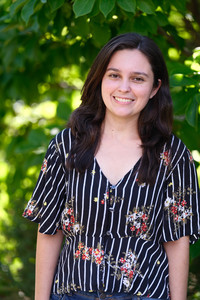
Michelle Marrero Garcia, Lead Teaching Mentor
Michelle started teaching in her first semester of the Physics PhD program. She has taught either kinematics or electromagnetism at the introductory level (every semester since then), but she loves teaching any subject within Physics. Her favorite part is watching the face of her students light up as they explore the world through a new lens. In Michelle’s approach to teaching, she always tries to be empathic and put herself in the student’s position. She has found that having changed her field of study from mechanical engineering (as an undergrad) to physics (as a grad) gave her the ability to understand how students that are new to the subject think and feel.
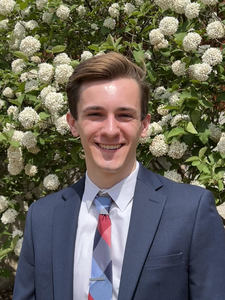
Sam Kramer, Lead Teaching Mentor
Sam is a third-year Ph.D. candidate in the Department of Physics and has been teaching for Physics 202, a course for engineering major undergraduates that focuses on electricity, magnetism, and optics, since arriving in Madison. Sam also taught for a similar course as an undergraduate at Saint Louis University. In this role, he leads both discussions, which focus on problem solving, and labs, which provide hands-on experience with the concepts being taught. Physics can be an overwhelming subject, so Sam tries to distill the material into manageable chunks for the students, emphasizing the broader concepts underlying the formulas students use and drawing explicit connections between parts of the curricula. This is meant to develop the dynamic problem solving skills students need when encountering problems they have not seen before.
Dan McCammon awarded Distinguished Career Prize
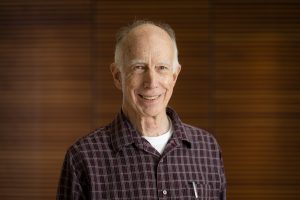
Congrats to Prof. Dan McCammon for earning the Distinguished Career Award from The American Astronomical Society’s (AAS) High Energy Astrophysics Division (HEAD) for his pioneering work on the development of microcalorimeters that has led to breakthroughs in X-ray astronomy and on soft diffuse X-ray background.
The HEAD Distinguished Career Prize is awarded at the time of the Division Meeting to recognize an individual high-energy astrophysicist who has made outstanding contributions to the field of high energy astrophysics throughout their career. Outstanding contributions include a body of important research results (observational, theoretical or experimental) which have led to ground-breaking results in high-energy astrophysics, and/or a career of mentorship to a new generation of high-energy astrophysicists, especially if this mentorship helped to support under-represented or under-resourced scientists and increased the diversity of the HEA community. The winner gives an invited talk at the Divisional Meeting in the award year. The prize carries a cash award of $1500.
AAS announced many 2025 prizes today; the full list can be found at their website.
This post is adapted from the AAS news release and website linked within the text.
Physics major Caleb Youngwerth wins poster prize at APS Eastern Great Lakes meeting

Congrats to physics, astronomy-physics, mathematics and french major Caleb Youngwerth on winning the Meeting Award for Undergraduate Student Poster at the Fall 2024 meeting of the Eastern Great Lakes Section of APS!
Youngwerth’s poster, entitled, “Harnessing Molecular Simulation of the DLVO Potential to Engineer New Battery Technologies,” was presented at the meeting held October 18-19 at Marietta College in Ohio. The work was conducted in the chemical and biological engineering group of Prof. Rose Cersonsky.
The award was announced at the meeting and comes with a cash prize.
For more info, read Chemical and Biological Engineering’s story about Caleb: https://engineering.wisc.edu/blog/student-wins-award-for-research-on-colloidal-gels/
Baha Balantekin wins 2025 APS Bethe Prize

Congrats to Prof. Baha Balantekin on winning the American Physical Society’s 2025 Hans A. Bethe prize!
The Bethe prize is awarded to recognize outstanding work in theory, experiment or observation in the areas of astrophysics, nuclear physics, nuclear astrophysics, or closely related fields. Balantekin won “for seminal contributions to neutrino physics and astrophysics — especially the neutrino flavor transformation problem — both for solar neutrinos and the nonlinear supernova environment.”
Balantekin works at the intersection of particle physics, nuclear physics, and astrophysics. For much of his career, he has studied theoretical aspects of neutrino transport originating in the Sun, supernovae, or neutron star mergers.
“The concepts (I brought to the field) were marrying neutrino physics with many-body physics,” Balantekin says. “Of course, incorporating many-body aspects is common in condensed matter and nuclear physics, but it’s not as common in environments studied in astrophysics.”
Several fundamental astrophysical processes produce neutrinos as byproducts, and scientists have been studying neutrino origins and patterns for decades. Detecting the Sun’s neutrinos can reveal insights into its nuclear reactions, for example, and detecting neutrinos from core collapse supernovae can reveal insights into the early universe.
Balantekin’s early research was on the theory of neutrino transport from the Sun. He has also been studying core collapse supernovae, the result of a star running out of nuclear fuel. During collapse, a very hot star cools very quickly, emitting neutrinos on the order of 10^58.
“A number of that magnitude means you can no longer ignore the neutrino-neutrino interactions,” Balantekin says. “And then it becomes a very interesting many-body problem, where you have two-body interactions between neutrinos, and the propagation, and then it becomes a very complex problem.”
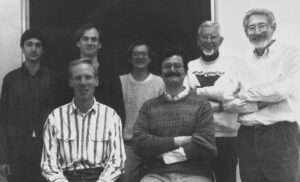
To describe this problem, has more recently begun using techniques from quantum information science to study entanglement of neutrinos with each other and to look at the signatures of such interactions and how they might contribute to heavy element formation.
The Bethe Prize was awarded solely to Balantekin, but he says he would not have won it without his collaborators over the years.
“You don’t do work in a vacuum,” Balantekin says. “I’ve worked with a lot of very talented young people. I would like to acknowledge first not only my graduate students at Wisconsin, but also the Fellows who came from the N3AS Physics Frontier Center we have. And the people I collaborate with around the world. We also have colleagues here in the department like Sue Coppersmith and Mark Saffman who contributed many ideas.”
The Bethe prize consists of $10,000 and a certificate citing the contributions made by the recipient. It is presented annually.
Britton Plourde elected Fellow of the American Physical Society

Congratulations to Prof. Britton Plourde for being elected a Fellow of the American Physical Society!
Plourde was elected “For important contributions to the physics and operation of superconducting qubits, including the development of techniques for scalable qubit control and readout, and investigations of decoherence from vortices and nonequilibrium quasiparticles.” He was nominated by the Division of Quantum Information Fellowship.
APS Fellowship is a distinct honor signifying recognition by one’s professional peers for outstanding contributions to physics. Each year, no more than one half of one percent of the Society’s membership is recognized by this honor.
See the full list of 2024 honorees at the APS Fellows archive.
Daniel Den Hartog earns Progress Award from Laser Society of Japan
Congrats to plasma scientist Daniel Den Hartog who is part of a team that was recently awarded a Progress Award from the Laser Society of Japan. This award is given to research that has shown a significant impact on the advancement of laser engineering.
The work was led by Ryo Yasuhara of the National Institute for Fusion Science in Japan. The team was recognized for “research on transient plasma electron and temperature distribution measurement by Thomson scattering method using a repetitive 20 kHz, 1.2 J, nanosecond laser.”
The Progress Award was one of a handful awarded recently by the Laser Society of Japan. For a full list, see LSJ’s awards site.
Pupa Gilbert earns WARF Named Professorship
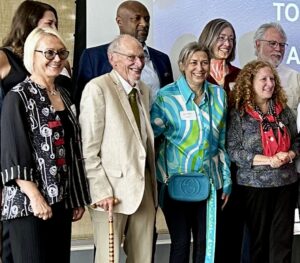
Back row from left: Lauren Bishop (professor of Social Work, Romnes winner), Charles Lee Isbell, Jr. (UW Provost), Susan Harness (Maria Stuchly Professor of Electrical Engineering), Russ Shafer-Landau (Elliott Sober Professor of Philosophy).
Physics professor Pupa Gilbert is one of eight UW–Madison faculty awarded WARF Named Professorships, which come with $100,000 and honor faculty who have made major contributions to the advancement of knowledge, primarily through their research endeavors, but also as a result of their teaching and service activities. Award recipients choose the names associated with their professorships.
Gilbert, the John D. Wiley professor of physics, joined the Department of Physics in 1999 as a full professor, following staff scientist positions in the Italian National Research Council (CNR) in Rome and the Swiss Institute of Technology in Lausanne (EPFL). Her research focuses on biomineralization, that is, on understanding the nanoscale formation mechanisms of natural biominerals, especially coral skeletons, but on a side she also studies sea urchin spines, mollusk shell nacre, tooth enamel, and inner ear cochleaer bone. She also strives to understand the evolution of biomineralization, and how biominerals interact with the environment in the past, present, and future. She is actively working to save coral reefs from climate change.
Her role in the profession has included being research director for the NSF-funded Synchrotron Radiation Center at UW–Madison, chair of the Division of Biological Physics (DBIO) of the American Physical Society, a Radcliffe Fellow at Harvard University, and establishing “the Cnidarians,” a group of tens of diverse undergraduate students at UW–Madison who produce great discoveries by doing massively parallel data processing. She teaches Physics in the Arts, a popular course for non-science majors on light, color, and sound. She was knighted by Italian President Carlo A. Ciampi in 2001.
“Prof. Pupa Gilbert is a luminary in the field of biomineralization, developing a fundamental understanding of these crucial processes that are shared by many diverse organisms,” says Kevin Black, chair of the UW–Madison department of physics. “Prof. Gilbert is a knight of the Italian Republic, and stalwart advocate for involving undergraduates, in particular those from underrepresented groups in her research. This award recognizes the many contributions to the academy in her long and productive interdisciplinary research program and is well deserved.”
For her named professorship, Gilbert chose John D. Wiley, the former UW–Madison Chancellor who earned his MS and PhD from this department. He was a member of the technical staff at Bell Laboratories, then a visiting scientist at Max Planck Institute for Semiconductor Physics. He joined the faculty at UW–Madison as professor of electrical and computer engineering in 1975, where he did groundbreaking research on semiconductors and metals, and earned major patents at WARF. Later, he became Chair of the Materials Science Program, Dean of the Graduate School, Provost, and then Chancellor (2001-2008), all at UW–Madison.
Wiley also started campus-wide initiatives such as cluster hiring and originated many campus building projects. He was the first Director of the Wisconsin Institute of Discovery, a position he held from 2008 until he retired in 2011.
Gilbert chose Wiley, whom she calls “a brilliant physicist,” for her named professorship for all the reasons listed above. She also credits him with bringing her to UW–Madison.
“When there was a cluster hire in biophotonics back in 1999, John Wiley wanted me to join the university and he had them include the word spectromicroscopy — the synchrotron method that I developed — into the search to encourage me to apply,” Gilbert says. “I really didn’t want to apply, I was on my way to CalTech, but of course I couldn’t say no to John.”
In total, thirty-two University of Wisconsin–Madison faculty were awarded fellowships from the Office of the Vice Chancellor for Research for 2024-25, including eight WARF named professorships, 13 Romnes faculty fellowships, and 11 Kellett mid-career awards. The awardees span the four research divisions on campus: arts and humanities, physical sciences, social sciences and biological sciences.
“These awards recognize excellence in faculty research, academics, and outreach at various stages of their scholarly careers and provide an opportunity for continued development of their research programs,” says Cynthia Czajkowski, interim vice chancellor for research. “I look forward to seeing the results of their imaginative use of these funds.”
The awards are possible due to the research efforts of UW–Madison faculty and staff. Technology that arises from these efforts is licensed by the Wisconsin Alumni Research Foundation and the income from successful licenses is returned to the OVCR, where it’s used to fund research activities and awards throughout the divisions on campus.
Mark Eriksson named Steenbock Professor
This story was originally published by the Office of the Vice Chancellor for Research
Mark Eriksson, professor of physics, and Mikhail Feldman, professor of mathematics, have been named recipients of UW–Madison Steenbock Professorships.
“This professorship is among the most prestigious and important professorships for researchers at the UW–Madison,” says Cynthia Czajkowski, interim vice chancellor for research. “This recognition is accompanied by discretionary funds to provide recipients the freedom to explore innovative research directions and to explore new approaches to their research areas.”
In the early 1980s, Evelyn Steenbock initiated a program to endow a series of professorships in the natural sciences in honor of her late husband, Harry Steenbock, emeritus professor of biochemistry.
Harry Steenbock (1886-1967) developed an inexpensive method of enriching foods with Vitamin D. His discovery led to the eradication of rickets, the bone-deforming deficiency disease, throughout most of the world. He is also renowned for his discovery of the conversion of carotenes to vitamin A.
Steenbock assigned his patents for advances in human and animal nutrition to the Wisconsin Alumni Research Foundation (WARF), and accumulated royalties from Steenbock’s patents supplied about half the funds for the Steenbock Memorial Library construction on campus. Steenbock Memorial Library is a primary resource library for the students, faculty and research staff at the UW–Madison.
The Steenbock Professorship provides research funds to recipients annually for 10 years and honors those faculty who have made major contributions to the advancement of knowledge, primarily through their research endeavors at UW–Madison, but also as a result of their teaching and service activities.
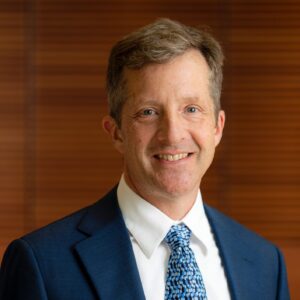
Eriksson, awarded the Steenbock Professorship in the Physical Sciences, was recently chair of the Department of Physics. He joined the UW–Madison physics faculty in 1999 and is a world-leading expert in the development of quantum information systems using solid-state quantum dot qubits.
As department chair, Eriksson promoted the Wisconsin Idea by supporting the department’s role in connecting with audiences all around the state of Wisconsin, including restarting The Wonders of Physics Traveling Show.
Eriksson received a bachelor’s degree in physics and mathematics from UW–Madison in 1992, received his PhD from Harvard University and was a postdoctoral member of technical staff at Bell Labs.
His research has focused on quantum computing, semiconductor quantum dots and nanoscience. He leads a team dedicated to developing spin qubits in gate-defined silicon quantum dots with the goal of enabling quantum computers, which manipulate information coherently, to be built using many of the materials and fabrication methods that are the foundation of modern, classical integrated circuits.
Eriksson is widely recognized for engaging collaborative partnerships with industry, government leaders and other university research institutions to tackle some of the greatest challenges in quantum information science and technology. Last year, the Eriksson group announced its partnership with Intel and HRL Laboratories as part of the LPS Qubit Collaboratory (LQC) national Quantum Information Science Research Center hosted at the Laboratory for Physical Sciences at the University of Maryland, College Park to collaborate on research in advanced computer technologies.
“I intend to use the award to explore new opportunities in silicon-based quantum computing, including new ideas for connecting qubits to each other across large distances, and the use of near-atomic-scale metamaterials to endow semiconductors with properties even better suited to quantum computing than those available today,” Eriksson says.